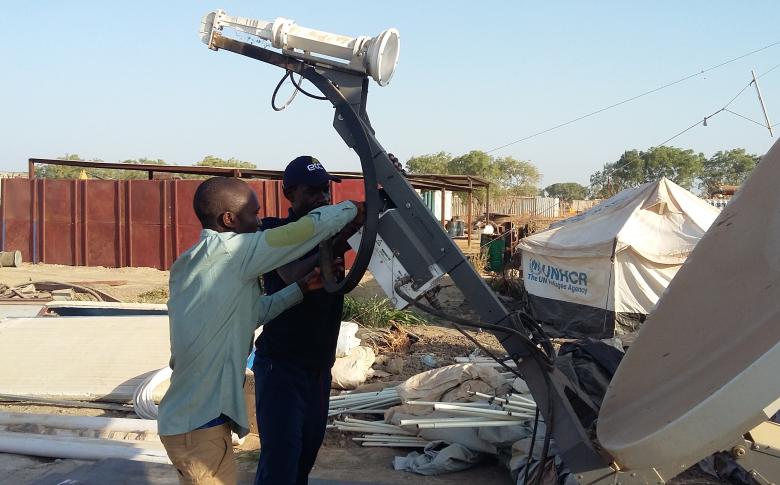It's a Year of Transition, it's a HISP Year

The ETC to implement the new Inter-Agency Humanitarian Internet Support Project
Sitting in his prefab in the remote South Sudanese state of Northern Bahr el Ghazal on 22 September 2014, Peter Kout, Red Cross Director in Aweil, received an email from his official domain. His excitement was palpable. It was the first time he had received an email in Aweil because it was the first time he had Internet connectivity there. His agency had just become the first of many aid organisations to be connected to the new Humanitarian Internet Support Project (HISP).
The Emergency Telecommunications Cluster (ETC) was activated in South Sudan in 2011 and since then has been providing essential communications services to the humanitarian community in key operational areas. Typically the ETC provides emergency communications support as an interim solution until such time as local providers restore, or can provide, adequate connectivity services. But what happens when there is no available alternative? This is where HISP comes in.
HISP is a reliable and affordable high-speed Internet connectivity solution for humanitarian communities in remote locations in South Sudan. It is the ETC phase out strategy to gradually replace its current short-term services.
In 2014 HISP was piloted in Aweil, where the humanitarian presence is stable and a long -term Internet connectivity solution is needed. Partners responding in this area tested HISP services free of charge for three months and provided valuable feedback to the project team. Following the successful outcome of the pilot, the service was officially launched in Aweil on 1 January 2015. Today, over 60 users are able to access Internet connectivity through HISP in this area.
What makes HISP an affordable long-term solution is that the price of the service is recovered through a cost-sharing mechanism – the percentage of the total cost that each agency pays is directly proportionate to the number of users it registered. The project uses VSAT equipment from an established global satellite service provider to ensure reliable and high-speed connectivity. Helpdesk support and technical advice are also provided to subscriber organisations.
As HISP is the first ETC project of its kind, there were of course a number of challenges faced during the implementation phase. The equipment and system deployed were completely new, for example, and were installed during the harsh South Sudanese rainy seasons. However these are the periods when connectivity is most needed as already remote areas become completely cut-off.
Following the success in Aweil, HISP infrastructure and services have been deployed in Malakal (Upper Nile state) and Bor (Jonglei). Today, all three sites are fully operational in with an increasing number of agencies showing interest in participating in the project. Since February, 14 humanitarian organisations access high-speed Internet connectivity through HISP in Malakal. In May, it was Bor turn to be successfully connected to HISP, providing access to ten humanitarian organisations. And there are still further plans to expand. HISP will be extended to Bentiu (Unity) and Mingkaman (Lakes) for a total of five HISP sites planned for 2015.
Following this first implementation phase, should the need for HISP continue, new market solutions will be explored and opportunities extended to any local service provider. If the criteria for service provision are met, HISP has the ability to be rolled out to all remote locations where the humanitarian presence is stable and a long-term connectivity solution is needed.
For ETC South Sudan, 2015 will be a year of deep transition, a year of embracing new innovations that facilitate emergency response. It will be the year of HISP.
For more information about HISP in South Sudan, contact: SouthSudan.HISP@wfp.org
By Sofia Grivet Brancot, ETC Information Management Officer, South Sudan